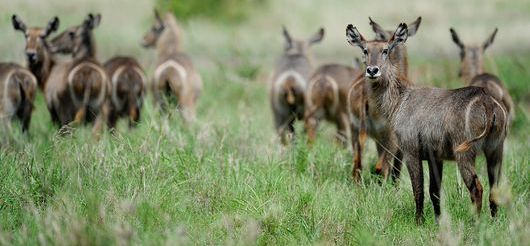A gender‐sensitive analysis of a community‐based wildlife utilization initiative in Zimbabwe's Zambezi valley
16 December 2019
16 December 2019
"This study examines the development consequences of the Zimbabwe’s CAMPFIRE Program with reference to the differential outcomes for men and women. The program, and associated development activity, has initiated many changes in village life. Some of these have led women into opportunities that were formerly not available, including formal education,...
Wildlife diseases are in fashion. This is creating an explosion of related knowledge. The dynamics of both wildlife and diseases and the changes in livestock and wildlife management make it increasingly difficult to overview the current situation of wildlife diseases in Europe. This article reviews some of the most relevant...
Diseases at the livestock–wildlife interface: Status, challenges, and opportunities in the United States
16 December 2019
16 December 2019
This study conducts a systematic review of the scientific literature to evaluate the status of diseases at the livestock–wildlife interface in the United States. Specifically, the goals of the literature review were three fold: first to evaluate domestic animal diseases currently found in the United States where wildlife may play...
An assessment of Poaching and Wildlife Trafficking in the Garamba-Bil-Chinko Transboundary Landscape
16 December 2019
16 December 2019
This study seeks to understand better and address the poaching and trafficking of wildlife in the Garamba-Bili-Chinko landscape of southeast Central African Republic (CAR) and northeast Democratic Republic of Congo (DRC). It present analysis of 1) local communities living around the protected areas of the GBC landscape, 2) wildlife trafficking...
This IUCN Briefing paper provides examples of trophy hunting cases, controversial cases, weak governance, corruption, lack of transparency, excessive quotas, illegal hunting, among others. It aims to feed discussion on trophy hunting while giving an overview of the potential benefits of well-regulated programs for both wildlife conservation and for the...
EU Human Wildlife Conflict Case studies
16 December 2019
16 December 2019
The EU Large Carnivore Platform has gather a diversity of case studies, which document how cohabitation between people and large carnivores within the EU can be supported. The cases studies are classified into five categories: (i) Provision of Advice/Awareness Raising; (ii) Provision of Practical Support; (iii) Understanding Viewpoints; (iv) Innovative...
Human-Wildlife Conflict Worldwide: A collection of case studies, analysis of management strategies and good practices
16 December 2019
16 December 2019
This report provides a comprehensive review covering a wide array of the available literature on wild mammal-human conflict, with the exception of human-elephant. Through a set of study cases this reports highlights HWC common problems and solutions across bio-geographical regions worldwide as well as it provides practical recommendations to better...
Linkages among forest, water, and wildlife: a case study from Kalapani community forest in Lamahi bottleneck area in Terai Arc Landscape
16 December 2019
16 December 2019
In this article, the authors present a case study from a forest restoration project to assess the linkages between forest, water and wildlife across Lamahi bottleneck area in Terai Arc Landscape. It aims to assess the linkages between forest restoration, water resource management, and wildlife conservation in critical watersheds that...
Science-based Approach to Promote Human-Elephant Coexistence — Lessons from Valparai, India
16 December 2019
16 December 2019
Conflict between elephants and community members frequently lead to use of reactive measures, such as chasing elephants, capture and translocation, but these often fail to resolve conflicts on a sustained basis. This case study reports the long-term work developed in Valparai plateau in the Anamalai hills (India) to display where...
Evaluation of the management of wildlife in forestry consessions around national parks in Gabon
16 December 2019
16 December 2019
The forests of Gabon supports the largest populations of lowland gorillas, chimpanzees, and elephants in the world. Nevertheless, the presence of forest concession make the region vulnerable to exploitation that facilitate large-scale hunting and trade, increasing the threat to important habitats as well as the survival of large mammals. This...

